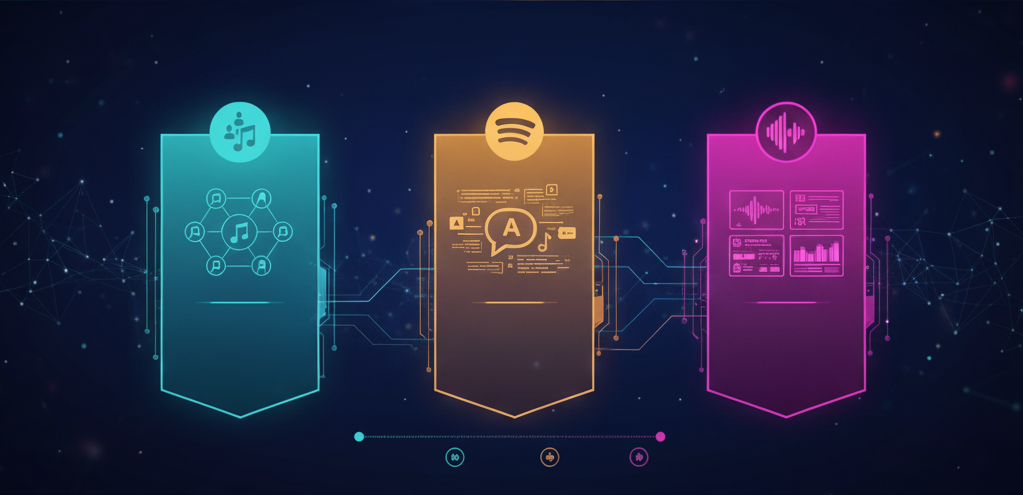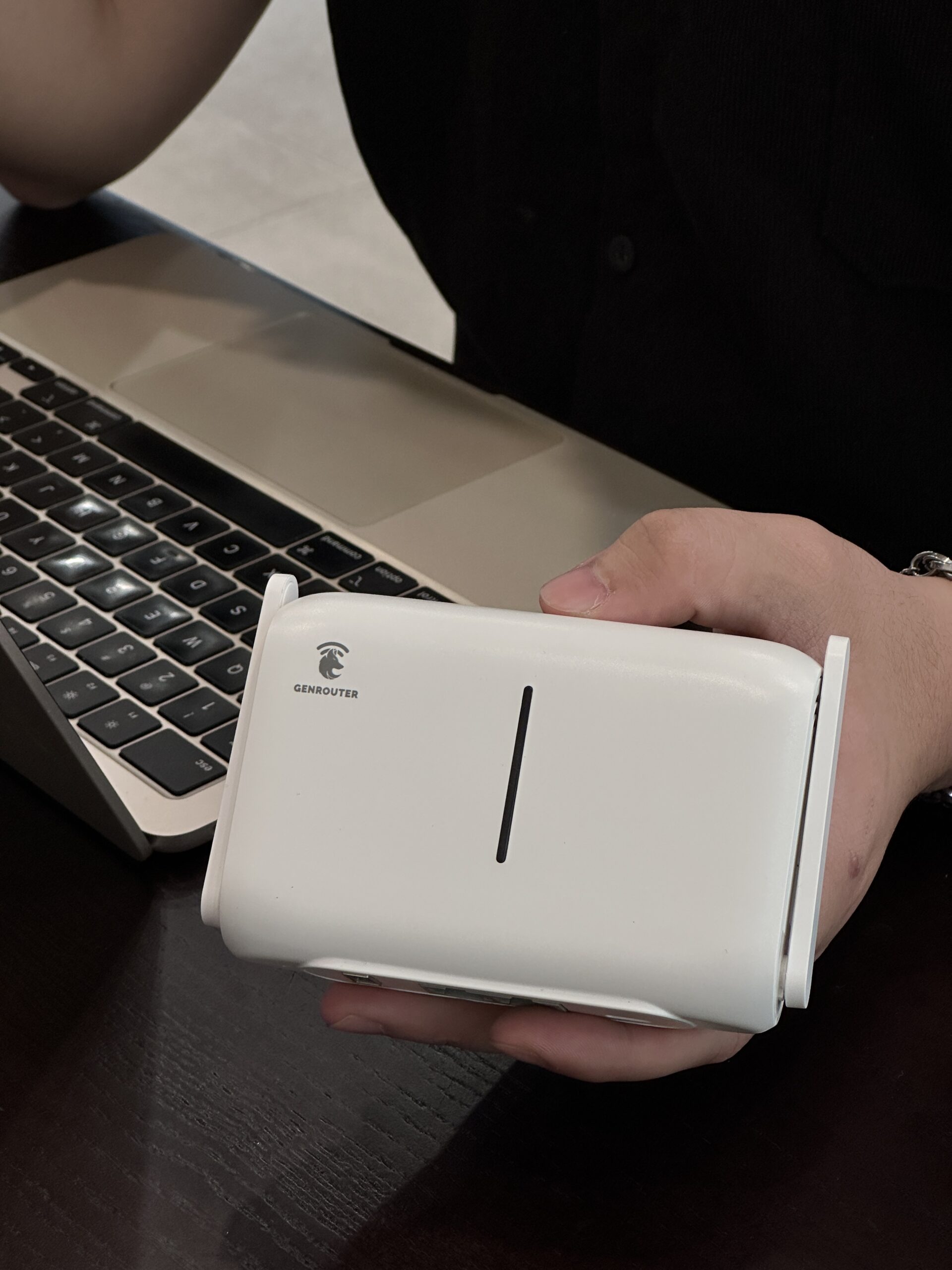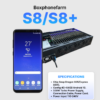The Demystified Spotify Algorithm opens the door to understanding that, in digital music, influencer marketing, and online entrepreneurship, everything beats to the rhythm of algorithms, with one particularly influential one on this platform. For MMO professionals, digital marketing experts, or companies seeking automation, knowing how this recommendation brain works is not a luxury but a strategic necessity. Stopping the guesswork and starting to work with the algorithm makes the difference between stagnation and explosive growth on the platform. This article explains its technical mechanisms and proposes a roadmap for safe and effective automation.
1. The Algorithm Is Not Your Enemy: It’s a Potential Partner
Many creators see the Spotify algorithm as a dark and capricious force that determines their fate. This is a mistake. In reality, the algorithm is a search and recommendation system designed for a single purpose: to keep users listening. If it achieves this, everyone wins: Spotify, the user, and most importantly, you as a creator or marketer.
Your goal must be to transform that perception from “enemy” to “partner.” To do this, you must speak its language, which is the language of data. Just as social media risk control systems focus on the authenticity of behavior, Spotify’s system looks for patterns that imitate a genuine listener.

2. Central Component: The System Behind Spotify’s Recommendations
Spotify’s recommendation engine is supported by a sophisticated system that continually tests and evaluates which songs to show you, based on the response it receives from the user. Every recommendation is an “experiment.” This system combines information from various sources to predict the listener’s future interest. The success of any automation lies in understanding that this system seeks “authenticity” and “context.”
3. The Three Pillars of the Spotify Algorithm Analysis
To make recommendation decisions (for example, in the famous “Discovery Weekly” or “Release Radar” lists), the Spotify algorithm relies on the fundamental triad of music data processing. These pillars allow it to build a “trust profile” of a song and an artist.

A. Collaborative Filtering
This is the most traditional pillar and is based on the idea that “if person A likes song X and person B also likes song X, it’s likely that B will like song Y if A likes Y.”
- Your Listener Footprint: The algorithm builds a detailed listener profile by observing your habits. If you repeatedly listen to artists similar to those of other users, your preferences align with their “cluster” or group.
- Implication for MMO: If you use accounts to “nurture” an artist, they must mimic the listening pattern of a real and consistent listener, not just listening to the target track, but also a variety of similar and natural music. The lack of a human behavior pattern is why the risk control of platforms like TikTok, Instagram, and Facebook detects automated traffic.
B. Natural Language Processing (NLP)
NLP helps the algorithm understand the song’s cultural and semantic context.
- Metadata Analysis: Spotify examines the song title, artist name, tags, playlist descriptions, and crucially, what people say about the music on blogs, forums, and social media.
- Implication for SEO: The way you title and describe your playlists and the music you include is how you communicate the “genre” and “mood” of your music to the algorithm. A semantic and relevant title helps the algorithm classify it better.
C. Raw Audio Analysis
This pillar is the science behind the sound. The algorithm “listens” to the music itself, without relying on human descriptions. It uses deep learning models for audio analysis.
- Low-Level “Listening”: Deep learning models analyze characteristics such as tempo, musical key, energy (how “upbeat” it is), mode (major or minor), and timbre (sound quality).
- Mood Segmentation: Models can categorize sound with descriptive labels like “melancholic acoustic music” or “optimistic driving rhythm.” This allows the algorithm to recommend music to you that sounds similar, even if you have never heard of the artist.
4. The Most Critical Signals the Spotify Algorithm Tracks
The algorithm not only focuses on whether you listen to a song, but how you listen to it. The following are the key indicators that define a song’s success and an account’s health, and which must be the focus of any automation strategy:
A. Listen Time
This is the golden rule. A listen is recorded and counted for “royalties,” and most importantly, as a retention signal, only if it exceeds the 30-second mark. If a user listens to the entire song or repeats it, the algorithm interprets this as a resounding success for the recommendation.
B. Skip Rate
This is a negative quality indicator. If a high percentage of listeners skip your song before 30 seconds, the algorithm interprets this as a low-quality signal or a “bad recommendation,” and will reduce the visibility of that song.
C. Save to Library
When a user saves your song to their personal library (“Like”), this is a very strong intent signal. It indicates that the user wants to return to it. This action is a clear indication of a ” real” user and not a traffic robot.
D. Add to Playlists
This is the most powerful signal after listen time, as it implies active curation. It means that the listener:
- Likes it enough to listen to it multiple times.
- Has actively curated it in their listening experience.
5. How to “Nurture” the Algorithm: The Human Behavior Strategy
The key to success is not in quick tricks, but in the constant supply of positive and consistent signals to the Spotify algorithm. To do this, we must leave behind the deficiencies of obsolete solutions.
A. The Failure of Traditional Docker Cloud Phone
Traditional automation solutions (such as Docker or emulators) generate “dubious footprints” that Spotify’s risk control system (similar to TikTok’s and Facebook’s) easily detects. The reasons are clear:
- Fake and Duplicated Footprint: They have duplicated or generic hardware identifiers (IMEI, CPU, MAC), which triggers risk control for “mass operation.”
- Inadequate Isolation: Docker containers share the same kernel and resources, leading to “contamination” between accounts (if one account is flagged, all others on the same server are affected).
- Anomalous Behavior: Their actions are too regular, lacking the randomness and natural fluctuation of a human being.
B. The “Cloud Real Machine” Solution
The right way to nurture the Spotify algorithm is by using a solution that offers hardware-level isolation and advanced human behavior.
- Authentic Physical Environment: Each account must have a unique and non-virtualized device footprint (IMEI, MAC, sensor data). GenFarmer’s Android Cloud Phone (Android Cloud) is based on deep hardware/kernel-level isolation, avoiding Docker detections.
- Biomimetic Behavior: Automation must perfectly simulate human patterns: full listening (>30 seconds), variation in listening times, and simulation of the kinetic parameters of touch (swiping speed, press duration, random micro-delays) to overcome behavioral biometrics.
6. GenFarmer: The Technology to “Speak” to the Spotify Algorithm
GenFarmer was designed to solve the problem of authenticity and scalability that traditional systems cannot offer. Our GenFarmer Spotify service (part of an ecosystem that includes solutions like GenFarmer TikTok Trust) is not limited to playing music, but is designed to speak to the Spotify algorithm in the language it understands: high-fidelity user signals.
Authenticity and Isolation Technology
To ensure that your operations are indistinguishable from those of a real user, GenFarmer relies on the following technical solutions:
- Hardware-Level Isolation: We use Cloud Real Device System and Box Phone Farm technology, where each instance has its own set of unique virtual hardware parameters (IMEI, MAC, Android ID) and a sensor stack with random fluctuations. This eliminates the risk of “contamination” and device grouping detection.
- Network Infrastructure (Router Proxy): Our solutions include the management of Router Proxy to ensure that the IP, network country code (MCC/MNC), and time zone are geographically consistent with the operated account.
- Behavioral Biometrics Automation: Our automation API framework creates random and non-linear interaction trajectories that simulate human actions. This ensures that plays pass the behavioral biometrics analysis looking for “robot” patterns.


GenFarmer provides the infrastructure you need, whether through the sale of Router Proxy and Box Phone Farm , or Cloud Phone.
7. Conclusion: Stop Guessing, Start Acting Strategically
The Spotify algorithm is a gateway, not a barrier. Master its pillars and key signals—listen time and playlist additions—to guide your music marketing or MMO; the real advantage comes from operational intelligence and tool selection. Abandon detectable automations (Docker, emulators) and adopt authentic environments with high-fidelity human behavior; hardware isolation in Android Cloud sustains long-lived accounts and a sustainable business.
Let GenFarmer build your infrastructure with Cloud Phone, Box Phone Farm, Router Proxy and automation solutions like GenFarmer Spotify for safe, scalable, and algorithm-proof growth. Talk to a GenFarmer expert and turn signals into predictable revenue today.











